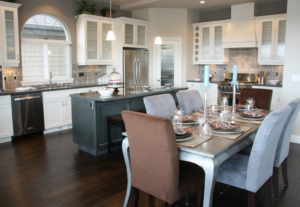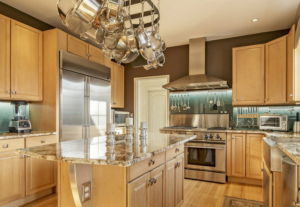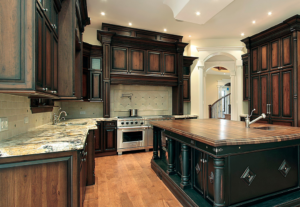
Renovating your home is a scary idea. But, sadly, sometimes it’s necessary. Homes age, trends come and go, and your resale value depends on keeping up with the basics of style and standards. Fail to mention, as things age, they do need replaced. Even antique landmark homes are constantly being renovated, merely with the materials and styles of the time whence they originate.
Nothing lasts forever, even the most well-built home needs to be remodeled from time to time. But, setting a budget for home renovation can seem like a daunting task. You’re no accountant or contractor, how could you even approach setting a reasonable, informed budget for such an undertaking?
Take a deep breath, it’s not nearly as bad as you think.
Cost Estimations
Decide first what it is you need/want done to your home, ideally. What do you envision your renovated home to look like? Determine from this what the materials are going to cost. Shop around, talk to people whom have done similar renovations, and itemize the costs.
To determine if you’re over budget, it’s all about percentages. You never want to spend more than 10-15% of your home’s value, in renovations. Anything above that is excess to the extreme.
Loan Options
So, you know what your materials are going to cost, and you’ve gotten it well within that percentage said above. But, this is still an expensive thing, and most people just don’t have the liquid assets to pay right out of pocket to have something like this done. There are options to approach this, depending on your situation and what ramifications you’re comfortable with in the long run.
- Home equity loans, which are one of the more common approaches, are commonly referred to as “second mortgages” and require you to borrow against most or all of a given value – sometimes the entire home’s value, or in the least, the renovations’ value. If you’re stable, this isn’t as problematic as it seems.
- Refinancing can extend and broaden existing home loans or mortgages, to pull a bit more liquid finances out to do what you need, but this is often looked at as deepening a hole you’re in.
- HELOC, or home equity line of credit, is similar to an equity loan, but in manageable amounts that don’t result in you being any deeper in than needed. These aren’t possible without good credit scores, most of the time.
- Cash-out refinancing is possible if you have sufficient equity, which allows you to extend your loan to a higher value than what is currently owed.
These are all big moves, so think long and hard about which of these you decide to do, if any.
Quotes
Now, get quotes from multiple contractors. Like any other business, shop around and get multiple opinions. Some contractors extend pad expenses, or opt for materials more expensive than you need. Others might cut corners to pocket differences.
This isn’t to say “most contractors are dishonest” – far from it. But, shop around, because like any business, you’re not going to get the best possible quote right out of the gate most of the time.
Stick to Your Plan
Stick with your plan once you commit to one. Don’t add new things to the list, don’t settle for half-completion, stick with your guns. Adding new ideas or extending the scope of the project will quickly run you above budget, and is a common pitfall for many homeowners.
Similarly, getting cold feet and stopping short results in a lot of wasted money on failed renovations.
Account for Hidden Costs
Surprises happen. You never know when hidden wear and tear need to be accounted for. New wiring, skeletal structural repairs, or damage during a project can add hidden, unexpected costs. That said, factor a couple percent of your budget for hidden costs, and undershoot that when planning.
To learn more about financial strategies for home renovation, fill out our contact form or call us today!






